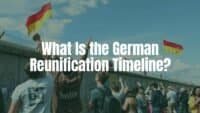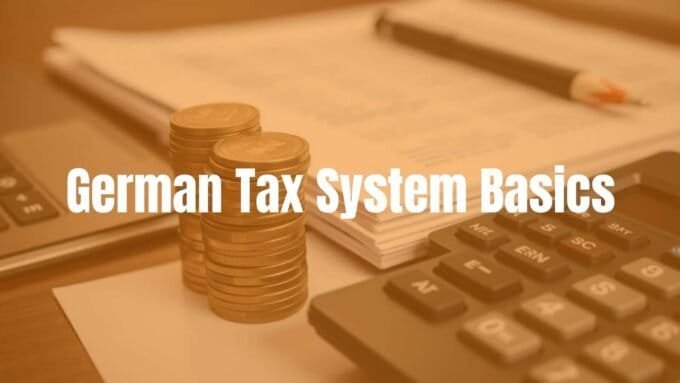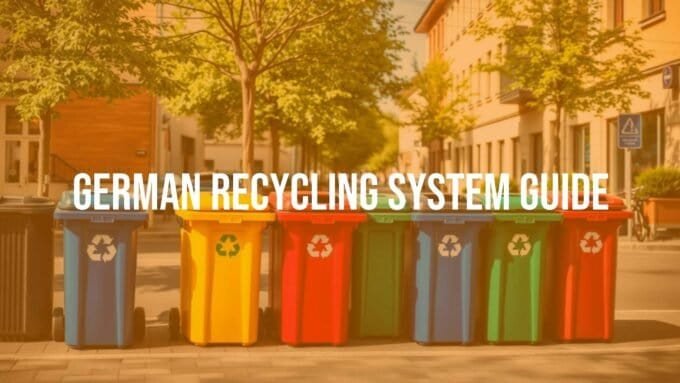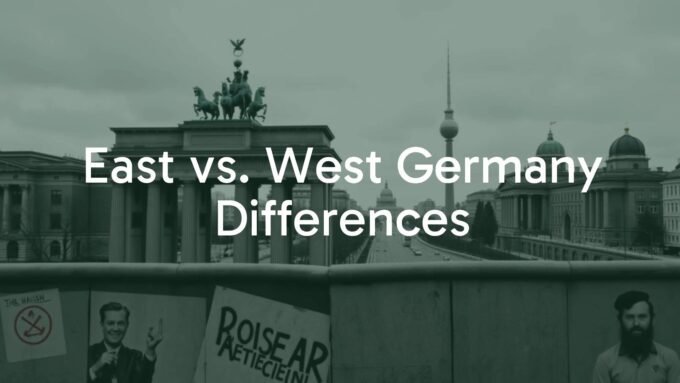In 2025, German climate policy stands at a turning point, facing bold targets while dealing with political change and economic pressures. The country keeps its long-term aim of climate neutrality by 2045 and a 65% cut in greenhouse gas emissions by 2030 compared to 1990. A new coalition, in office since May 2025, has shifted course in several areas. The coal exit by 2038 stays in place, but there is a stronger push for market tools and more use of natural gas as a bridge, plus a rethink of plans in transport and buildings. Projections now show higher emissions in 2030 than earlier estimates, which makes meeting national and international climate goals harder.
2025 is a key year as Germany tries to balance environmental goals with economic stability and public support. The tension between speeding up the energy shift and managing costs and social impacts is sharper than before. This article looks closely at Germany’s climate policy in 2025, covering targets, methods, and hurdles, and also its role in global climate action.
German climate policy 2025 at a glance
Key climate targets and milestones for 2025
Germany’s 2025 policy is based on firm, legally binding goals. The top goal is climate neutrality by 2045 (net-zero greenhouse gases). As a step on the way, Germany aims to cut emissions by 65% by 2030 compared to 1990, written into the Climate Action Act (Klimaschutzgesetz). The law sets yearly CO2 targets for each sector, with open yearly reviews and follow-up action if targets are missed.
For 2025, the CO2 price is a key marker. Starting at 25 euros per tonne in 2021, it rises to 55 euros per tonne in 2025 for traders of heating oil, gas, petrol, or diesel. This is central to the Climate Action Programme 2030, raising the cost of carbon and pushing cleaner options. Also, by 2025, federal funding for local public transport is set to double to two billion euros per year.
| Item | Target/Level | Timing |
|---|---|---|
| Climate neutrality | Net zero GHG | 2045 |
| GHG reduction vs. 1990 | −65% | 2030 |
| CO2 price (heat/transport fuels) | €55/t | 2025 |
| Federal funding for local public transport | €2 bn/year | From 2025 |
How current policy aligns with international agreements
Germany’s policy links closely to the Paris Agreement. The country pledges to keep warming well below 2°C and aims for 1.5°C. Leaders, including Chancellor Friedrich Merz, repeated this in May 2025, covering national, EU, and global goals.
Even so, current policies fall short of a 1.5°C pathway. The Climate Action Tracker (CAT) still rates Germany as “Insufficient.” The 2030 target is judged “Almost Sufficient” for a 2°C path but below what would count as a fair share, which would need deeper cuts and more climate finance. Experts say the new coalition’s measures could weaken existing policies and raise 2030 emissions. A softer push on renewables and higher reliance on gas as a bridge fuel does not match global moves to end fossil fuel use.
Climate policy drivers and decision-makers
Federal government roles and coalition agreements
In 2025, the federal government, a CDU/CSU-SPD coalition led by Chancellor Friedrich Merz, shapes climate policy. It inherited binding targets and the 2045 climate neutrality goal. The coalition deal shifts emphasis to market tools and competitiveness.
Environment Minister Carsten Schneider (SPD) and Economic Affairs and Energy Minister Katherina Reiche (CDU) guide strategy and delivery. Schneider plans a wide climate action package by end-2025 to update steps for 2030 and 2045. Reiche backs natural gas as a bridge and rules out a return to nuclear. She has also floated up to 20 GW of new gas power capacity by 2030. This shows the push and pull inside the coalition on speed and methods.
Influence of EU policies and global commitments
EU policy strongly shapes Germany’s choices. The European Green Deal and the EU goal of climate neutrality by 2050 guide national action. Germany supports making this goal binding through a European Climate Law and gives climate a high profile in EU work.
Globally, Germany supports the Paris Agreement and set 2045 net zero. Its Climate Foreign Policy Strategy from COP28 sets out work with major emitters, help for climate-vulnerable states, and partnerships with wider benefits. A flashpoint is the plan to use international carbon credits to meet targets, which critics say shifts cuts abroad and conflicts with current German and EU rules.
What are Germany’s 2025 climate goals?
Greenhouse gas reduction targets for 2025
The headline cut is 65% by 2030 vs. 1990, but 2025 is a key mid-period to show steady progress. The Climate Action Act sets yearly targets for all sectors so every part of the economy plays a role. These targets are more than aspirational: there are annual reviews and fixes if a sector falls behind. This close tracking aims to keep the 2030 and 2045 path intact.
Still, hitting the 2030 mark is hard. The Council of Experts on Climate Change (ERK) and CAT both say Germany is likely to miss without stronger action, especially under the new policy mix. Projections show at least an 85 MtCO2e gap in 2030 for a 1.5°C path.
Sector-specific emission reduction plans
Germany set plans for each sector-energy, transport, buildings, and industry-but the approach changed. In May 2024, the law replaced strict sector caps with a system where sectors can offset each other as long as the total stays on course. This worries observers, since transport and buildings often miss their goals.
In 2025, transport still lags. Road traffic makes up nearly 95% of domestic transport emissions. The new government:
- Scrapped EV sales targets
- Seeks looser rules for carmakers on EU CO2 standards
- Leans toward higher car use and more aviation support
In buildings, the coalition plans to repeal the Building Energy Act’s phaseout of oil and gas in new heating. A new, simpler version is planned, which could slow the move to low-carbon heat. In the power sector, renewables are growing fast, but plans for up to 20 GW of new gas by 2030 risk carbon lock-in, add emissions, and could undercut the coal exit by 2038 and the goal of fossil-free power by 2035.
Main strategies in German climate policy 2025
Shifting the energy sector: renewable energy, coal phase-out, and natural gas
The “Energiewende” remains central in 2025, though with some shifts. The aim is greenhouse-gas-neutral power before 2050, and 65% renewables in gross power use by 2030. Renewables supply about 60% of electricity in 2025. Offshore wind is a focus, with 20 GW planned by 2030 under the Offshore Wind Power Act. The cap on solar has been removed, and households are encouraged to add PV.
The coal exit is a key part, with coal power ending by 2038 at the latest. By June 2025, 16 coal plants had closed. The new government places more weight on gas as a bridge. While the prior plan foresaw 10 GW of hydrogen-ready gas plants, the current plan points to up to 20 GW by 2030. The aim is to help keep the grid stable during the shift, but it raises lock-in and emissions risks. Long-term gas contracts and some domestic extraction are back on the table. The nuclear exit stands.

Cutting transport emissions: e-mobility, rail, and the engine phaseout debate
Transport remains one of the toughest areas in 2025, and policy signals are mixed. The previous 15 million EVs by 2030 goal is gone, and the government wants softer EU compliance rules for carmakers. The general tilt favors car ownership (both ICE and EVs) and higher aviation support, drawing criticism in a sector that has long missed targets.
Even so, some pro-climate steps continue:
- Support for EV uptake remains, though purchase subsidies ended in late 2023
- A nationwide charging network for up to 10 million EVs by 2030 is still planned
- Strong investments in rail: €86 billion by 2030 from the federal government and Deutsche Bahn
- Local public transport funding doubled to €2 billion per year from 2025
The coalition did not reference the 2035 EU combustion engine phaseout and some parties seek to roll it back, promote synthetic fuels, and reject motorway speed limits.
Buildings and heating: changing the Building Energy Act and the heat shift
Heating and buildings are a major pain point in 2025, often missing targets like transport. The prior government changed the Building Energy Act (GEG) to require new heating systems from 2024 to use at least 65% renewables, pushing heat pumps and “hydrogen-ready” boilers.
The new coalition plans to drop the 65% rule in its current form. While it says the goal of clean heating stays, it wants a “technology-open, more flexible and simpler” law to gain more public support. As of September 2025, the existing rules still apply, but a reform is coming. Subsidies for renovation and heating will continue with CO2 cuts as the key yardstick. Communal heat planning will be simplified, and more state support will go to district heating grids.
Industrial change and the hydrogen roadmap
Industry is central to meeting climate goals, with a strong push on heavy sectors and a growing hydrogen market. Support includes “climate contracts” (CCfDs) that cover both upfront and operating costs for zero-carbon tech-a feature the new government will keep.
The Hydrogen Strategy seeks quick market growth for green hydrogen in sectors like steel and aviation. It uses wide-ranging tools such as H2Global and an amortisation account for the Hydrogen Core Network. Key hurdles remain:
- End-users delay decisions due to supply and price worries
- Domestic projects struggle without firm buyers
- Calls grow for hydrogen-specific CCfDs and extra funding
- Public procurement and early “lead markets” (e.g., green steel and cement) can build demand
Climate finance and funding sources
National climate funding instruments and investment plans
Germany backs climate action with major funding tools and long-term investment. A core element is the “Sondervermögen Infrastruktur,” created in March 2025. This €500 billion off-budget fund over twelve years, outside the debt brake, finances key infrastructure and renewables. Of this, €100 billion goes to the Climate and Transformation Fund (KTF), showing the intent to reach net zero by 2045.
CO2 pricing also raises money for climate action. With the price at €55/t in 2025, revenue will support climate measures and help households, for example by lowering power prices. Since 2020, more support has gone to efficient construction and renovation, including payments for replacing oil heating and higher KfW loans for efficient buildings. Tax breaks help owner-occupiers improve efficiency. The National Climate Initiative (NKI) has funded close to €1 billion in projects, drawing a total of €2.9 billion in investment over time.
Germany’s contributions to international climate finance
Germany is a leading donor to global climate finance. In 2022, it provided over €6 billion (grant-equivalent), and in 2023, €5.7 billion from the budget, with 43% for adaptation. This helped meet the shared $100 billion pledge for developing and emerging countries.
Germany backs the global goal to double adaptation finance by 2025 and plans €1.5 billion per year for biodiversity by then. It also pledged $100 million to the new Loss and Damage fund at COP28. Still, CAT rates Germany’s climate finance as “Insufficient” versus a fair share. A tripling of support and an end to overseas fossil funding would be needed to improve. Current policy leans more on private finance and non-traditional donors, and its foreign policy text allows exceptions for backing fossil extraction abroad for “geostrategic security of supply.”
Challenges and controversies for 2025
Social and economic implications of climate action
Policy in 2025 faces social and economic pushback, with concerns about costs and competitiveness as energy prices rise. The coalition deal from May 2025 puts price relief first, with plans to cut electricity taxes and grid fees and remove the gas storage fee. This reflects worries about burdens on households and industry. The move to a simpler Building Energy Act also answers public concerns about heating costs.
Critics say a narrow focus on upfront costs hides long-term gains, since many clean options cost less over their lifetimes than fossil choices. Policies need to be fair to keep public backing. Ideas include a “climate dividend” that pays carbon revenue back to citizens. Energy-intensive firms face high gas costs, so targeted tools like CCfDs can help them stay competitive while cutting emissions.
Energy prices and affordability for households and industry
Energy prices are a sensitive and key issue in 2025. German power prices are among Europe’s highest, amplified by the fallout from Russia’s invasion of Ukraine. The EEG surcharge is gone, but bills are still high for all users, slowing electrification.
The new government plans to cut the electricity tax to the EU minimum and lower grid fees, aiming for a lasting cap. Energy-intensive firms will get extended and bigger CO2 cost relief, and some will access a special industry power price. But grid expansion-over €400 billion for transmission and distribution-will be paid back through grid charges, which may add pressure on consumers. The core question is how to fund the energy shift without placing too much weight on households and businesses.
Debate over market-based mechanisms vs. regulation
A major debate in 2025 is the balance between market tools and direct rules. Chancellor Merz’s coalition puts higher weight on carbon pricing as the “most important tool” to cut emissions while staying competitive. It backs the EU ETS and national CO2 pricing, with revenue used to ease costs for households, support firms, and fund clean innovation.
This differs from the prior government’s rule-heavy approach, like the 65% renewables heating rule in the Building Energy Act. The plan to replace that rule with a “technology-open, more flexible and simpler” law shows the leaning toward markets. Critics warn that relying too much on prices without strong rules risks slow progress in lagging sectors. Looser sector targets, replaced by cross-sector balancing, may weaken direct accountability. The debate pits economic liberalism against tighter environmental controls and how best to speed up decarbonization.
Infrastructure shortfalls and grid expansion delays
Infrastructure gaps and slow grid build-out hold back the energy shift in 2025. Renewables now supply about 60% of power, but the grid lags. Regional mismatches and limited capacity raise congestion costs, feeding into higher grid fees. Building out both transmission and distribution could cost more than €400 billion.
The government plans to link renewable growth to grid progress and may cut wind land areas after 2027. That could slow new projects. The IEA urges a faster smart meter rollout to enable demand-side flexibility and quicker grid links for storage. Better location signals in auctions could steer projects to where they help the grid most. Beyond new lines, Germany needs modernized systems and faster planning and permits.

Heating policy disputes and building retrofit concerns
Heating policy is one of the most disputed topics in 2025. The 65% renewables rule for new heating faced strong resistance and is set to be scrapped in its current form by the new coalition.
The debate shows the scale of the retrofit task and cost worries for homeowners. A “technology-open” approach may win more support, but policy swings can cause delays in heat pump uptake. Clear and steady messaging on support schemes and the long-term case for heat pumps and district heating is needed. The IEA advises the government to send firm signals that electricity and clean district heat, plus efficiency upgrades, will be the main options for clean heating, while keeping affordability in view.
Implications for international and EU partnerships
Germany’s role in EU climate policy 2025 and beyond
Germany remains a major player in EU climate policy. It backs EU climate goals, including net zero by 2050, supports a binding European Climate Law, and promotes the European Green Deal.
The 2025 coalition deal adds conditions that may affect EU work. Germany supports a 90% EU cut by 2040 but says its own 2040 cut should not go beyond its 88% target. It also proposes covering up to 3% of the EU goal with projects in non-EU countries and allowing limited permanent negative emissions (CCS). Using credits from outside the EU conflicts with current law and could shift responsibility away from home cuts. Germany wants to act as a “bridge-builder” for trading schemes and carbon pricing, but its gas stance and market-vs-rule debate could shape EU energy strategy and tools like the CBAM.
Latest updates, monitoring, and public participation
Recent climate policy developments and progress reviews
By September 2025, a new coalition has reset parts of the agenda. Core goals-net zero by 2045, coal exit by 2038-remain, but policy shifts are under close watch. Environment Minister Carsten Schneider plans a detailed climate action program by the end of 2025 to set updated steps for 2030 and 2045.
Outside reviews are cautious. CAT still rates Germany as “Insufficient” and says new policies likely raise 2030 emissions. The ERK echoes these worries. Red flags include up to 20 GW of new gas power by 2030, the scrapped EV sales target, and plans to repeal the heating rule in the Building Energy Act. Forests have also turned from a sink to a source, making 2030 even harder. While the UBA says cumulative 2021-2030 emissions will meet the cap due to COVID-era overachievement, 2030 levels are still expected to overshoot the target.
Transparency, stakeholder engagement, and access to information
Openness, strong stakeholder input, and easy access to data help build support in 2025. The Climate Action Act requires a clear annual check of targets, with CO2 balances reviewed each year and fixes if needed. This is meant to provide accountability across sectors.
Yet openness only works with real engagement and clear messaging. Heated debates around the Building Energy Act showed that unclear communication and perceived burdens can erode support. The IEA calls for plain information on costs, benefits, and timelines. The plan to simplify the heating law points to a push for more public buy-in. Lasting progress needs dialogue, accessible data, and active roles for industry, civil society, and local communities so climate action is both effective and fair.
Key recommendations for advancing German climate policy in 2025
Strengthening policy stability and clarity
Germany needs steady, clear policy to move forward in 2025 and beyond. Political shifts and reversals create uncertainty and can scare off long-term investment. The IEA notes that stable rules are needed to support investment in renewables and related tech as coal exits. This calls for a clear long-term vision and consistent signals.
Policies in transport and buildings should avoid mixed signals. Investors need predictable rules to commit capital. A clear timeline for the use and phase-down of gas as a bridge fuel can lower lock-in risks. Any rewrite of major laws, like the Building Energy Act, should be built on broad agreement and a clear plan to avoid new delays and disputes.
Speeding up the energy shift and sector coupling
Germany must move faster on the energy shift and link sectors more tightly in 2025. Rather than tying renewables growth to slow grid timelines or cutting wind land, efforts should remove barriers, simplify permits, and fund large grid upgrades so renewables can grow. A fossil-free power system by 2035 needs a fast move away from coal and, later, gas.
Linking power, heat, and transport can raise efficiency and cut emissions. Priorities include:
- Faster EV rollout with clear incentives and rapid charging build-out
- Electrifying heat with heat pumps and expanding clean district heating
- Targeted, low-emissions hydrogen for hard-to-abate industry, backed by hydrogen-specific CCfDs
- Public procurement to spark early “lead markets” for green materials
Promoting fairness and social acceptance
Fairness is key to keeping public support in 2025. People often focus on upfront costs, which can weaken backing for needed steps. The IEA urges clear, plain communication about costs, benefits, and timelines, and points out that many clean options are cheaper over their lifetimes.
Policy design should protect lower-income households. Options include bringing back a “climate dividend” to return carbon revenues to citizens and income-based support for clean tech. In heating, help homeowners with clear grants and long-term finance for retrofits. In transport, make sure the shift to e-mobility does not unfairly affect certain groups. By putting social equity at the center and spreading benefits widely, Germany can build lasting support for its climate goals.












Leave a comment